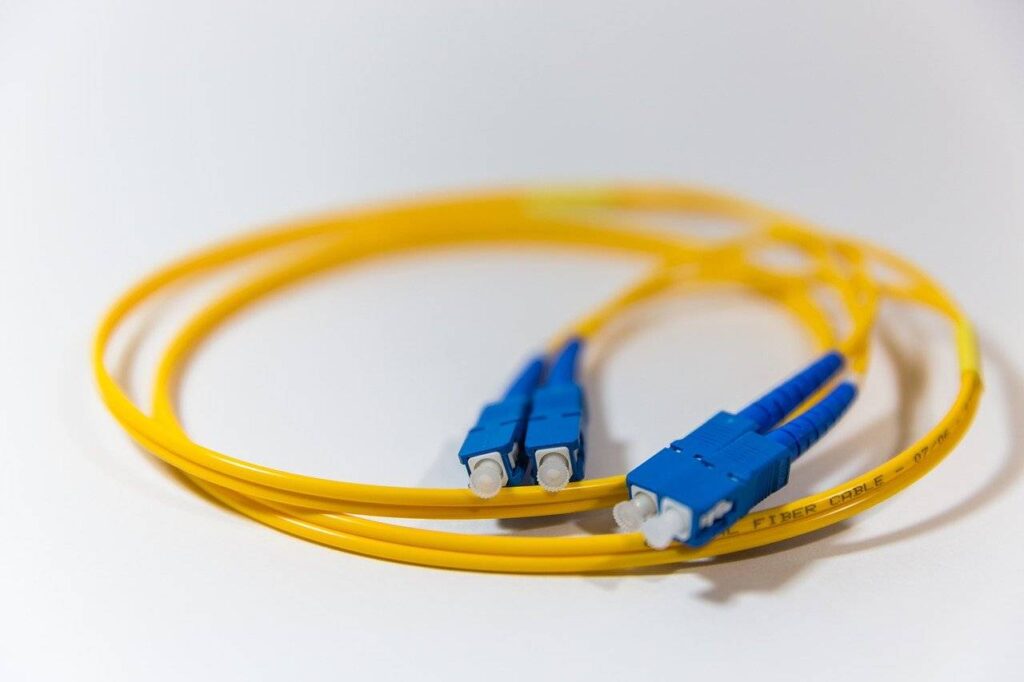Fiber optic cables are now widely implemented into Internet and networking technologies, cable television and telephone, the automobile industry, and other areas. Compared to traditional copper cables, fiber optic wires are considered more reliable and durable, although additional equipment for their installation and required connectors greatly influence the final cable cost. Interestingly, these cables were first commercially developed in the 1970s using the principle of transferring light along a stream of liquid. Today, we`ll try to discover which characteristics describe fiber optic cable.
What is a fiber optic cable?
A fiber optic cable is a unique technology that transfers data via the light through a glass or plastic fiber wire. Optical cables consist of a core made from pure glass surrounded by several layers. Cladding – the first layer – is in charge of reflecting light for the entire length of a cable core. The next layer is a coating designed to protect a cable from any damage and moisture. Then go strengthening fibers and a cable jacket that serves as extra protection. These days, optical cables are a basic configuration of data transmission in the Internet, communications, cable TV, and others.
Characteristics of fiber optic cable
Cost
One of the primary fiber optic cable characteristics refers to cost. These cables are considered the most expensive transmitting cables on the current market. Moreover, fiber optic transmitters and connective appliances appear even more costly than traditional wires. Hiring a team of experienced fiber cable installers also costs more than hiring the same specialists to install twisted-pair cables.
Bandwidth
Optical fiber cables stand for their high bandwidth – they can transmit data at rates of 100 gigabits per second per channel. The specifics of light that travels through the glass core enable it to ensure excellent throughput. Compared to copper cables that feature electric signals, light pulses in optical fiber wires can transfer data faster and with fewer errors. Thus, the high bandwidth capability of fiber cables makes them ideal for network technologies and serving applications that stand for significant traffic.
Connectors
When it comes to the characteristics of optical fiber cable, selecting the correct type of connector is not a problem anymore since you can utilize any of the available connector options. Current fiber cabling typically involves ST and SC connectors, while the latest versions of fiber optic technologies use LC and MT-RJ connectors. Besides, you can purchase a fiber optic cable with different connector types at each end for linking devices requiring diverse connectors.
Noise resistance
Another feature among characteristics of fiber is excellent noise immunity. EMI (electromagnetic interference) doesn`t affect fiber optic cables since the light technology does not involve electrical current for signal transfer. The advanced noise resistance of fiber optical wires allows using them on long distances before they require any signal repeaters.

